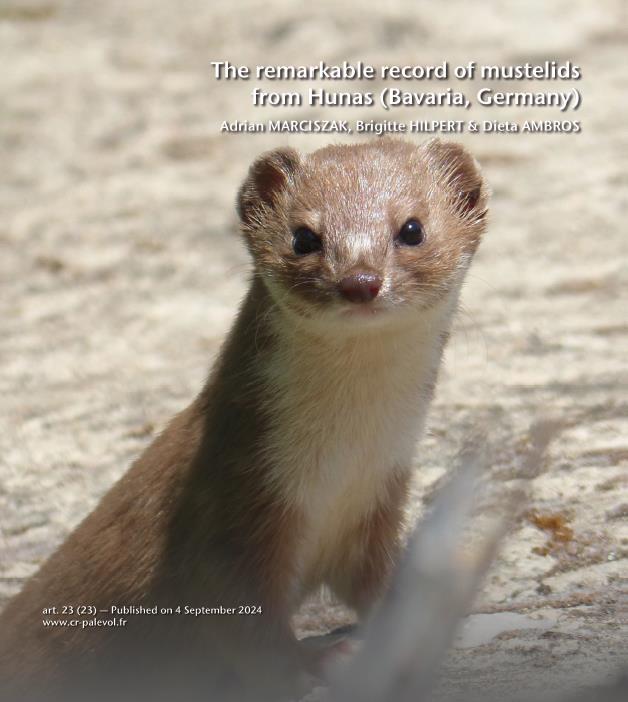
Weasels from Hunas
The journal Comptes Rendus Paleovol published an article co-authored by dr hab. Adrian Marciszak, professor of University of Wrocław, from the Faculty of Biological Sciences of the University of Wrocław, on the analysis of the rich paleozoological material of mustelids from the well-known, Bavarian site in Hunas. The text is also co-authored by dr Brigitte Hilpert and dr Dieta Ambros from the Friedrich-Alexander University of Erlangen-Nürnberg in Germany.
The main aim of this publication is a detailed morphometrical study of the fossil mustelids (mammals of the weasel family) from Hunas in Bavaria and a description of their taxonomic classification. The obtained results are further considered in the broader European biochronological and paleoecological context.
The mustelid assemblage from Hunas consists of seven species: a wolverine Gulo gulo gulo (Linnaeus, 1758), a badger Meles meles (Linnaeus, 1758), an otter Lutra lutra groissii Heller, 1983, a pine marten Martes martes (Linnaeus, 1758), a polecat Mustela putorius Linnaeus, 1758, an ermine Mustela erminea (Linnaeus, 1758), and a least weasel Mustela nivalis (Linnaeus, 1766).
On the basis of the morphology of the mustelids, accompanying fauna, and the Uranium-Thorium dating, the age of the finds was estimated to be 270,000-230,000 years.
Especially interesting among the remains are those of a least weasel. Over 720 well-preserved remains present us with an intriguing picture of this common yet invisible companion present in our closest environment.
A weasel, the smallest carnivorous mammal in the country’s teriofauna, is often found in the immediate vicinity to humans, a fact we are often unaware of. Only sometimes we are able to detect the brief presence of the swiftly weaving animal, always on the move. That actually constitutes a weasel’s whole life, spent in an ”enduro” mode, as if the animal were constantly on stimulants.
A weasel can live for over 12 years, however, it rarely survives to 3 years. It hunts on the move, attacking every encountered and seemingly easy to kill prey, leaping at it and biting at the spinal cord. It strikes terror among rodents, oftentimes targeting much larger animals. Even a large brown rat or a European hamster are not safe. Although when attacked, rodents attempt to actively defend themselves, with their teeth and claws being a deadly threat to a weasel, when it comes to a struggle between incisors and carnassials, a weasel almost always emerges victorious.
Oftentimes, a weasel kills more animals than it is able to consume, preparing provisions for later. At the same, due to its size, a weasel is targeted by the majority of larger predators. However, this attack is neither easy nor safe for them, as a weasel can defend itself aggressively and effectively, severely injuring the aggressor. Sometimes a weasel falls prey to birds of prey, owls or other carnivorous mammals, hence, its remains are relatively often found in cave sediments. This is exactly the case when it comes to the Hunas cave, as most of the remains ended up there as a result of such attack.
Translated by Weronika Bogucka (student of English Studies at the University of Wrocław) as part of the translation practice.



